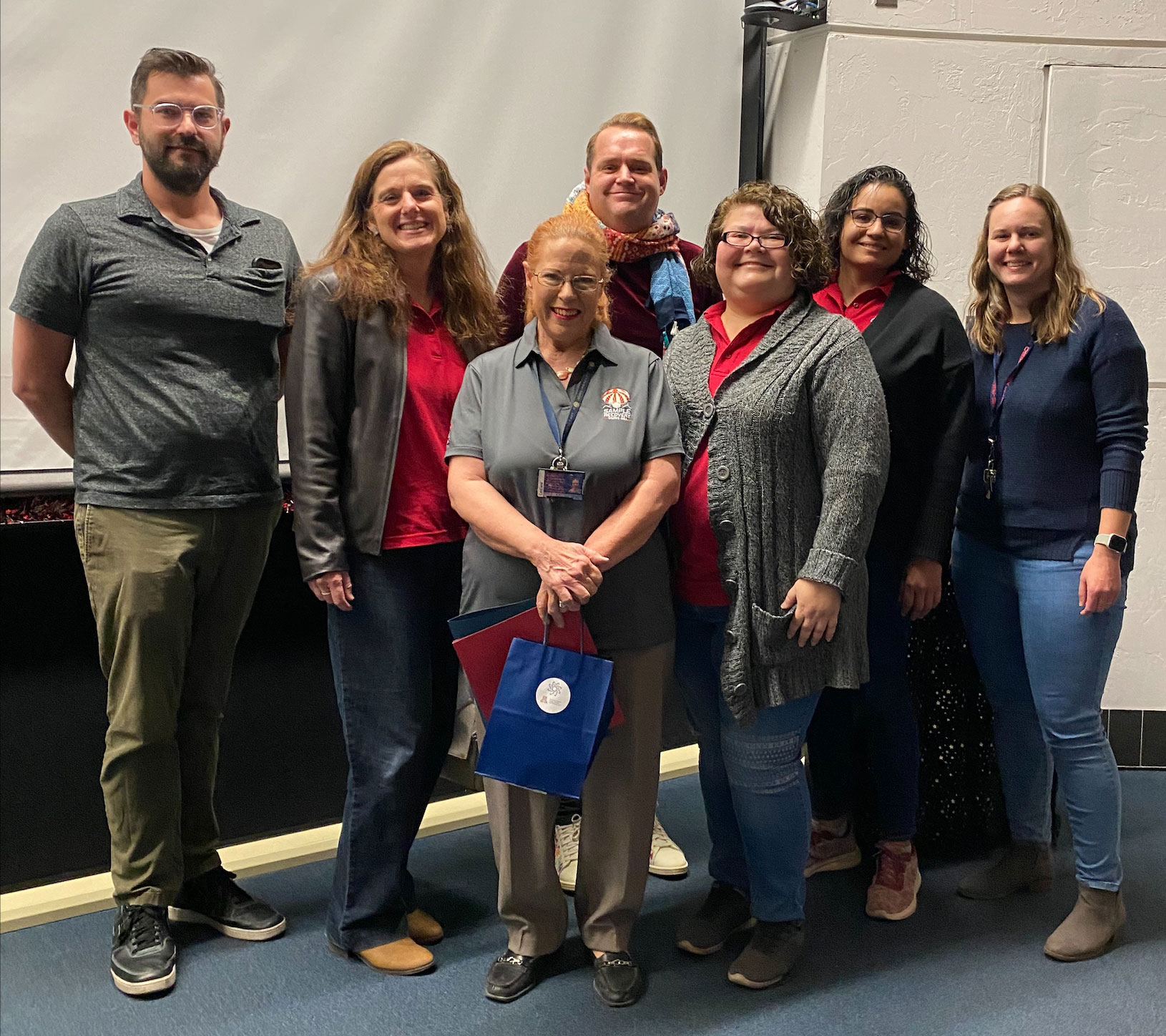
On December 4, Senior Research Specialist Dolores Hill was surprised with a Star Award from CoSSAC, the College of Science Staff Advisory Committee. Star Awards recognize staff members for outstanding achievement and contributions to teamwork on the job.
Dolores is a star at LPL, where she serves as laboratory safety manager and expert sample analysis technician, but she really shines in her role as outreach coordinator for LPL and OSIRIS-REx. Dolores is well known and always in-demand for her hands-on lessons about meteorites (and meteor-wrongs) and she is a respected colleague and liaison to amateur and professional meteoriticists alike. Dolores has been with LPL since 1981.


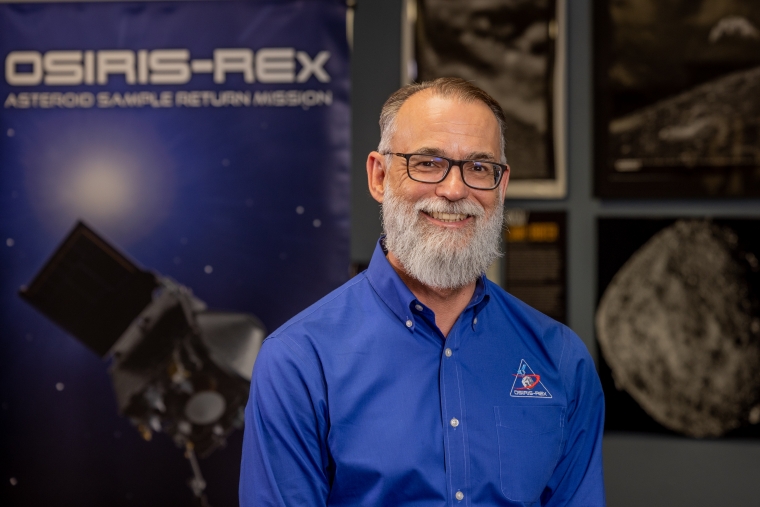 The
The 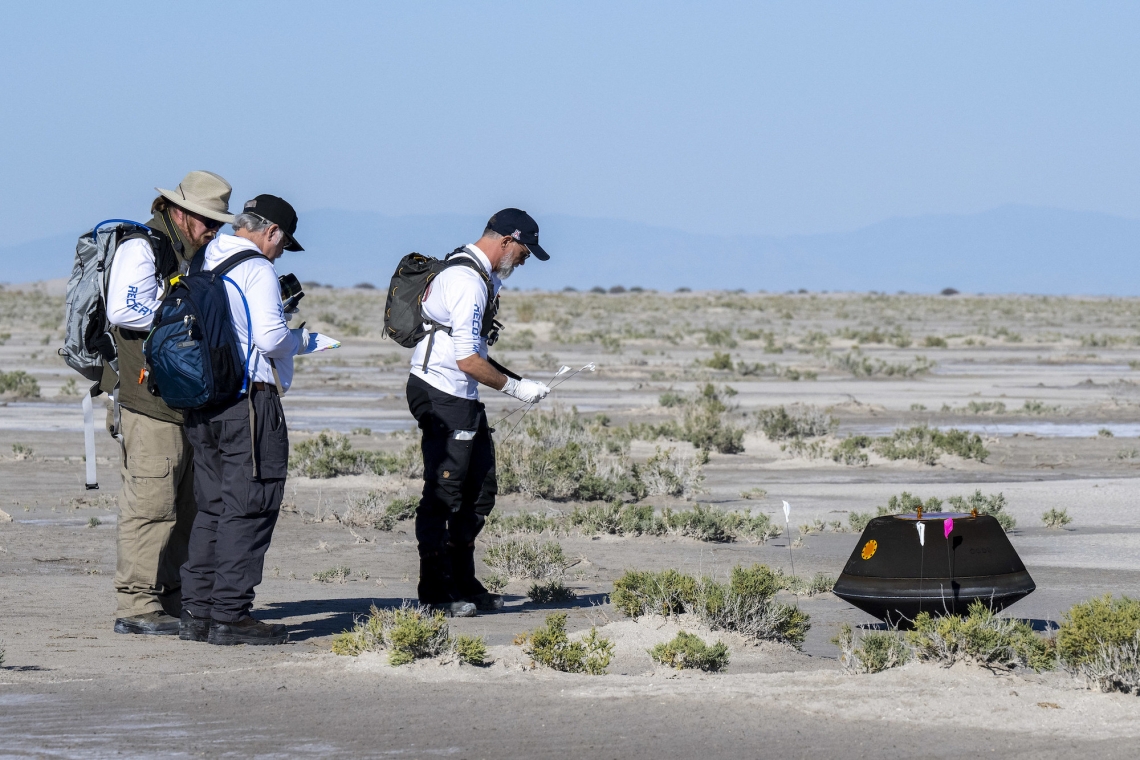 The
The 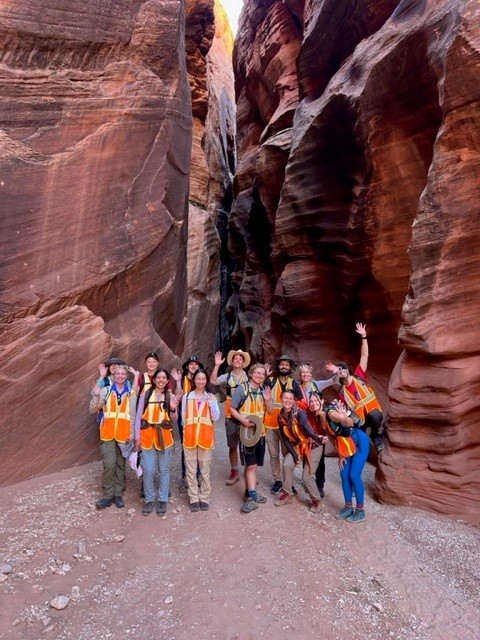
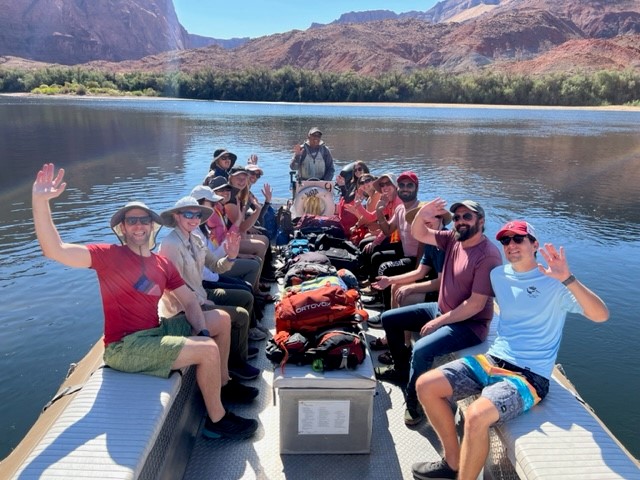
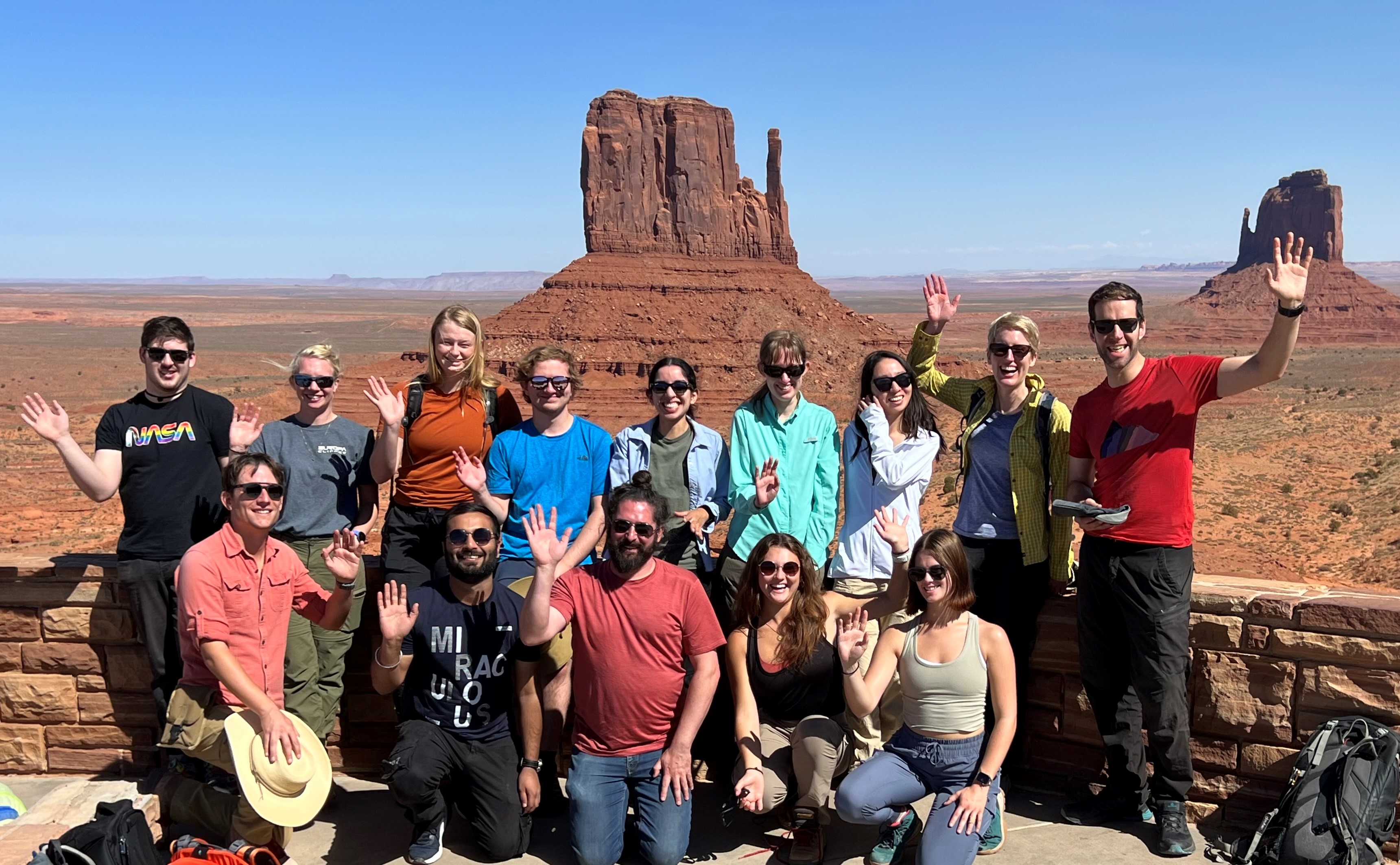
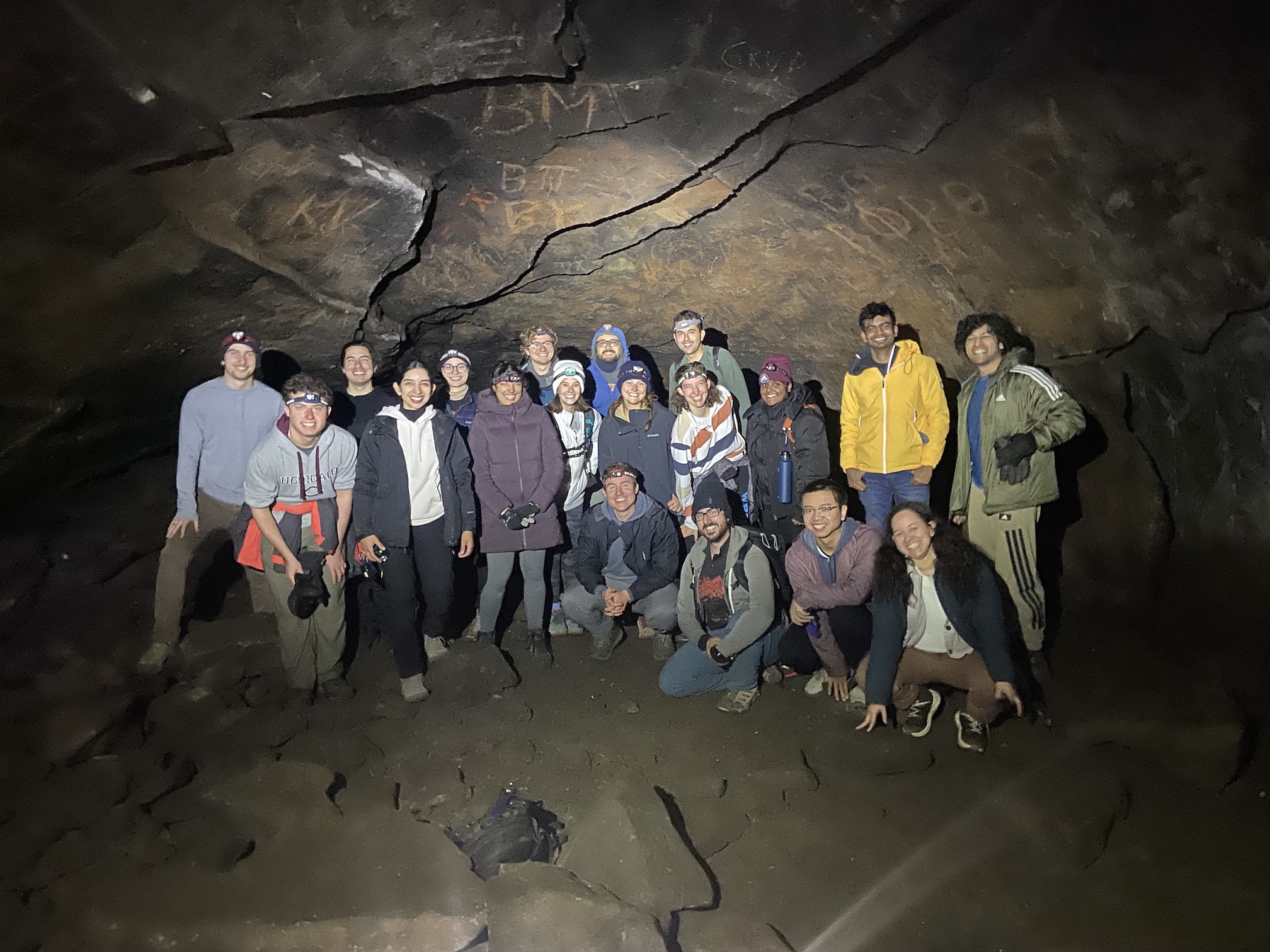
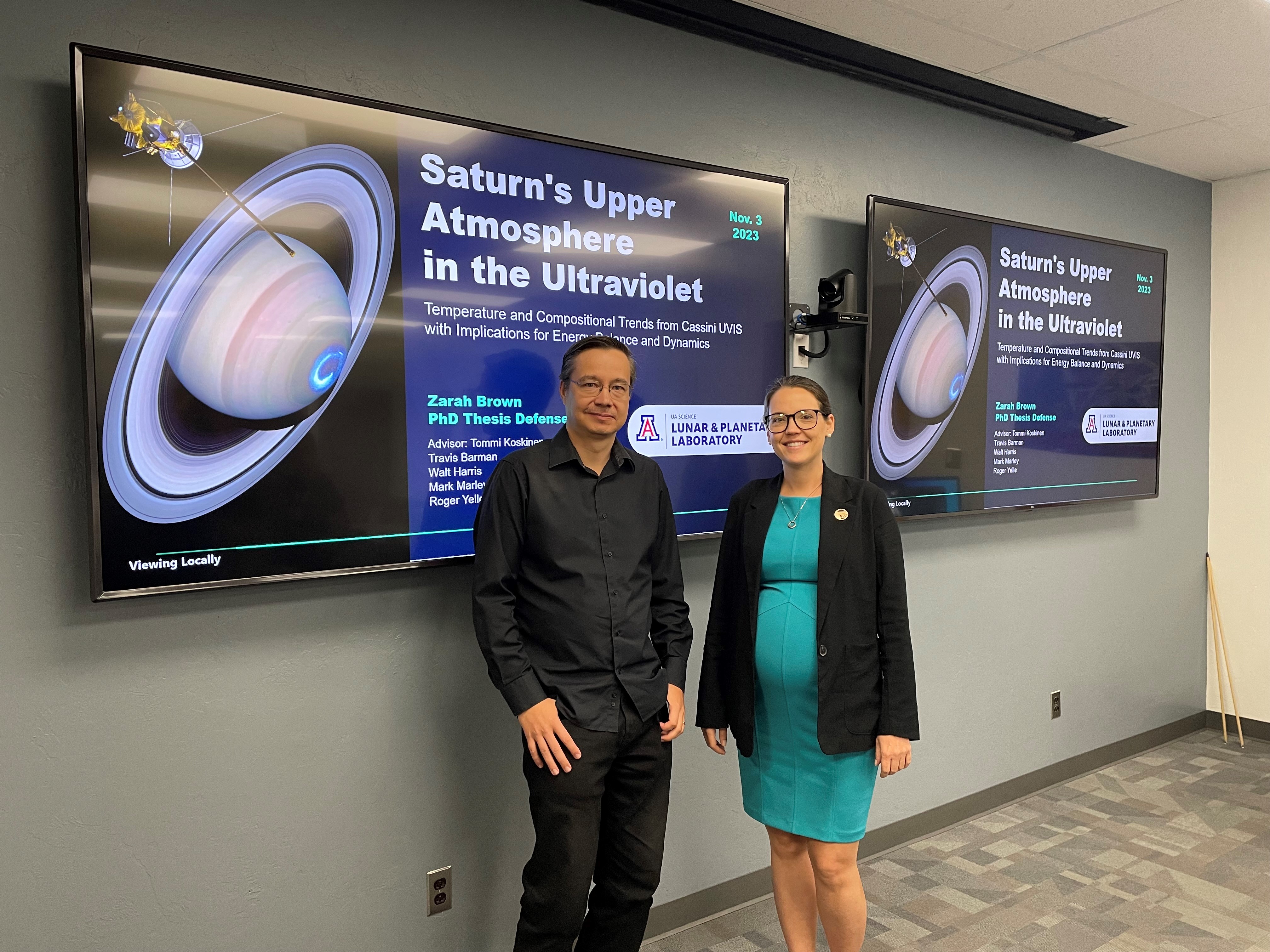
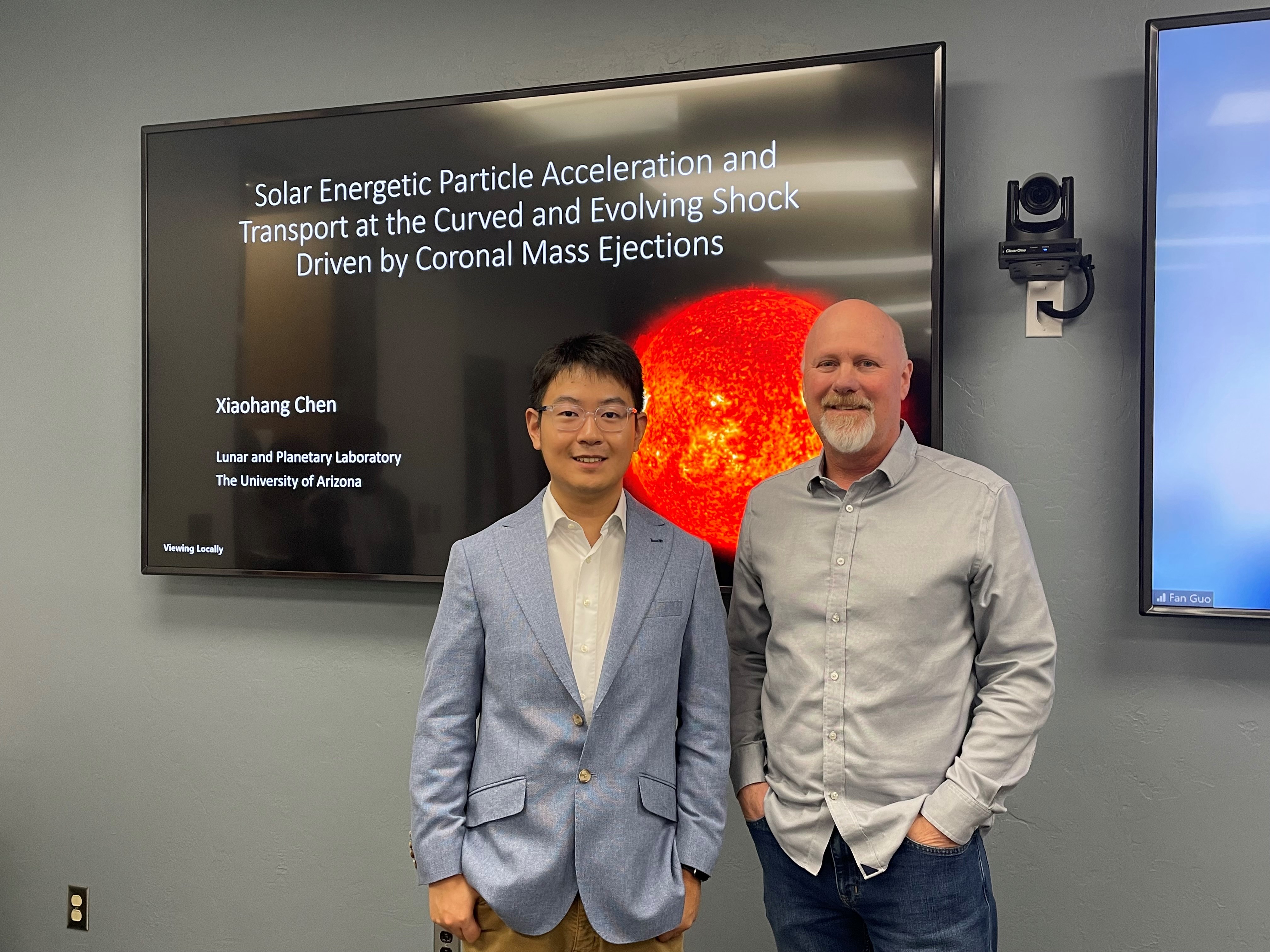
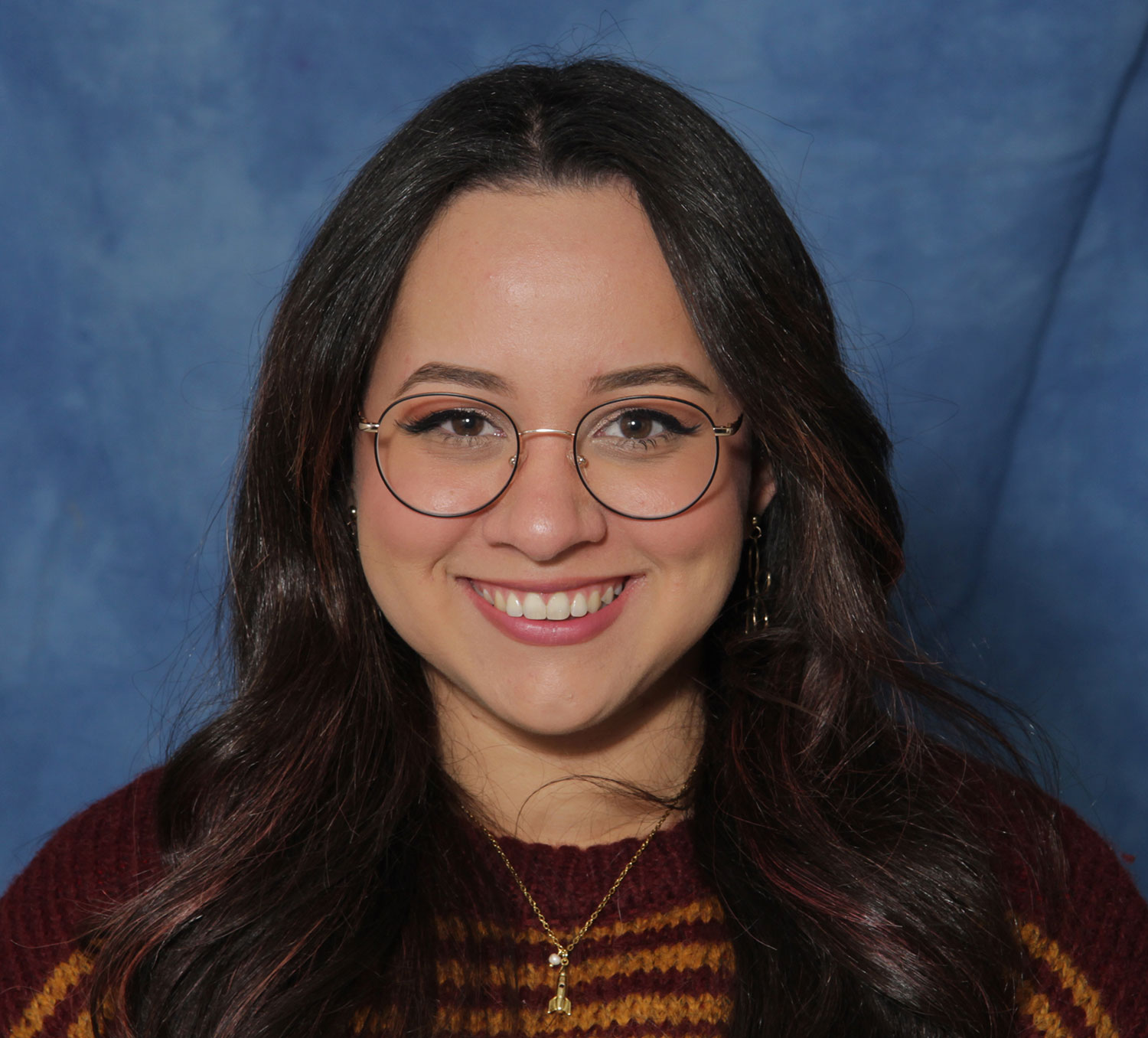
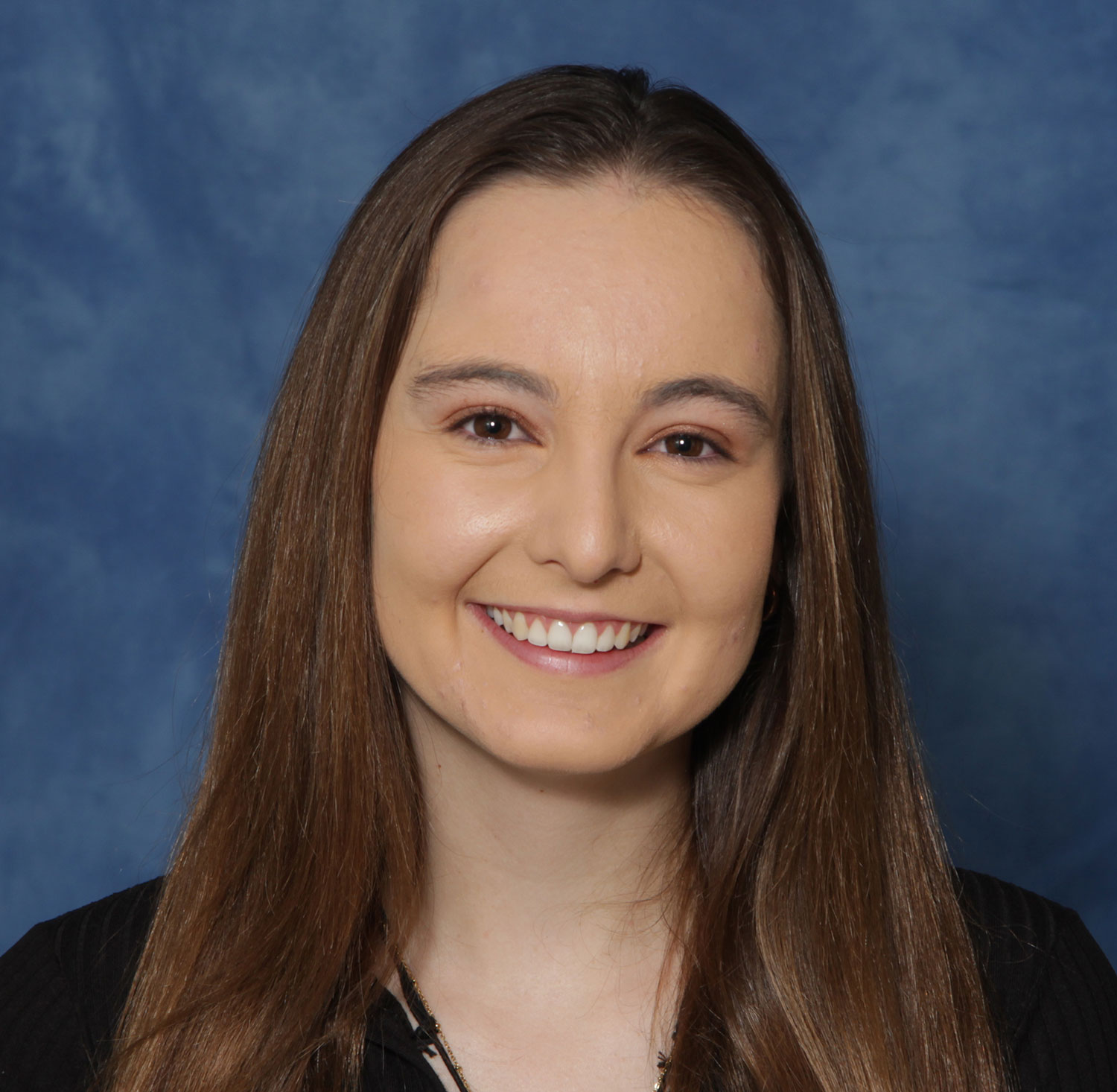
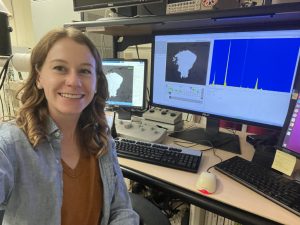 Fifth-year graduate student Zoë Wilbur was recognized with two awards for her research on meteorites.
Fifth-year graduate student Zoë Wilbur was recognized with two awards for her research on meteorites.